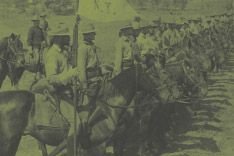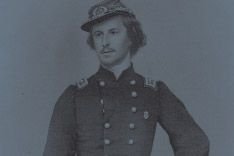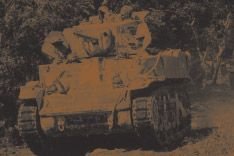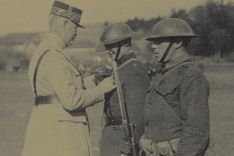The New York State Military Museum and Veterans Research Center tells the story of New York State’s rich military history and the service and sacrifice of its citizens through interpretive exhibitions, public programs, and the collection and preservation of artifacts and archival material related to the state’s military forces and its veterans.
ATTENTION: due to an upgrade being installed on the museum's phone system, there will be no voicemail for up to one month. Please either use email or keep trying to reach someone when they are available at their desk. We apologize for this inconvenience. Thank you.
Due to ongoing renovations, as of 10 February 2023, the Research Center is temporarily unable to answer research inquiries. We hope to re-open for inquiries sometime during the summer of 2024.
Answers to many inquiries may be found in resources available on our website. Research guides can be accessed at: https://museum.dmna.ny.gov/research/handouts
We apologize for any inconvenience.
 Unit History
- Explore the history of New York State’s military forces from the Colonial era to today. Information is organized by conflict.
Unit History
Unit History
- Explore the history of New York State’s military forces from the Colonial era to today. Information is organized by conflict.
Unit History
 Research
- Search our digitized reference material and online catalogs of our library collections including photographs, archival collections, secondary sources, and individual names.
Research
- Search our digitized reference material and online catalogs of our library collections including photographs, archival collections, secondary sources, and individual names.
 Exhibits
- Explore permanent and temporary exhibitions currently at the New York State Military Museum. This links to the website of the Friends of the New York State Military Museum.
Exhibits
Exhibits
- Explore permanent and temporary exhibitions currently at the New York State Military Museum. This links to the website of the Friends of the New York State Military Museum.
Exhibits
 Events
- Discover upcoming events and programs at the New York State Military Museum. This links to the website of the Friends of the New York State Military Museum
Events
Events
- Discover upcoming events and programs at the New York State Military Museum. This links to the website of the Friends of the New York State Military Museum
Events






